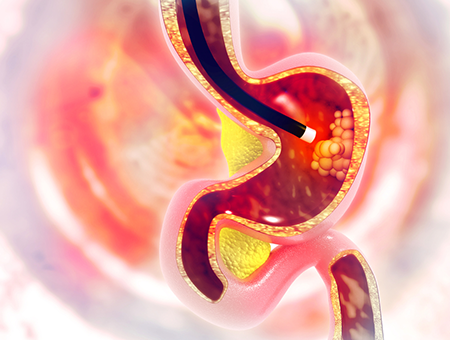
Know All About Sleep Endoscopy
Sleep Endoscopy is a powerful tool that is used to study dynamic airway in a sleeping patient who has Obstructive Sleep Apnea (OSA). The information gained by using this procedure helps a surgeon tailor the operative procedure as per the patient’s condition. Sleep Endoscopy is also known as Sleep Nasoendoscopy (SNE) or Drug-Induced Sleep Endoscopy (DISE).
2. What are the indications that a person may require a sleep endoscopy?
Indication
Anyone with documented Obstructive Sleep Apnea (OSA) or a history of severe snoring is recommended for an OSA surgery, typically DISE. The patient is put under light sedation and is studied in real time for accurate analysis.
3. How is obstructive sleep apnea different from snoring?
To put it simply, all sleep apnea patients snore but not all people who snore have sleep apnea. Lack of respiration characterises sleep apnea leading to a gradual fall in oxygen concentration which ends up in a choking spell and arousal.
4. Which conditions contraindicate a sleep endoscopy?
Some patients are not the ideal candidates for an endoscopy surgery: The following conditions contraindicate this surgery.
- Pregnancy
- Unsafe Airway
- History of frank aspiration
- History of Propofol allergy including soybean oil or eggs lecithin
At our centres, we use Propofol or Dexmedetomidine to achieve drug-induced sleep and carry out sleep endoscopy.
5. What is the procedure of Sleep Endoscopy?
Dr Piyush Setu, Department of Anaesthesia at Max Multi Speciality Centre, Panchsheel says, “We carefully titrate the drug doses of Propofol or Dexmedetomidine to induce obstructive apnea without causing central apnea.”
Furthermore, Dr Manish Rai, Department of Anaesthesia says, “All procedures are performed under specific controlled atmosphere with the patient connected to all vital monitors for real-time analysis”.
6. What can be observed from a sleep endoscopy?
A full real-time examination of the nasal cavity for any obstruction in airways is seen. A study of the upper airway follows it till the vocal cords.
However, these observations are only done after:
- Voice no longer arouses the patient
- A flexible fibreoptic scope is introduced without awakening the patient, but the patient is still spontaneously breathing.
7. What are the locations where the obstruction is common?
Velum, oropharynx, tongue base and epiglottis (VOTE) are four common locations where the obstruction occurs, and it is specifically seen in multiple DISE interventions.
8. How is obstruction classified?
A grade 0-2 is assigned base on the degree of obstruction
0 = No obstruction
1 = Partial obstruction
2 = Total obstruction
9. What are the advantages of DISE?
Dr Sanjay Sachdeva says, “DISE is preferred because it is a least invasive technique which gives us a precise diagnosis of upper airway obstruction. Moreover, DISE is also helpful in describing the type of collapse – Lateral, Anterior-posterior or Concentric which further helps in getting an accurate diagnosis.”
